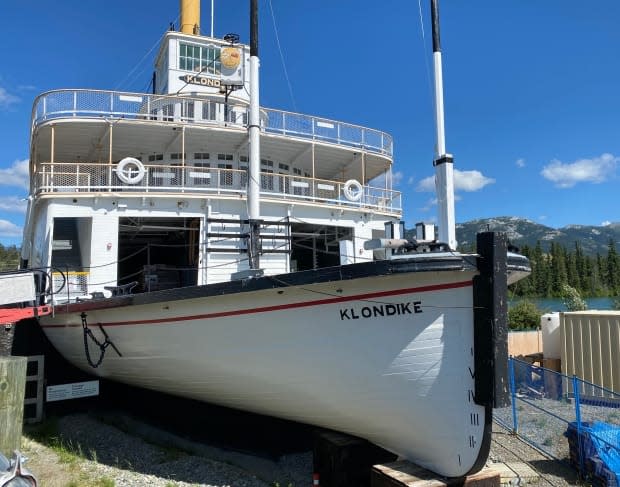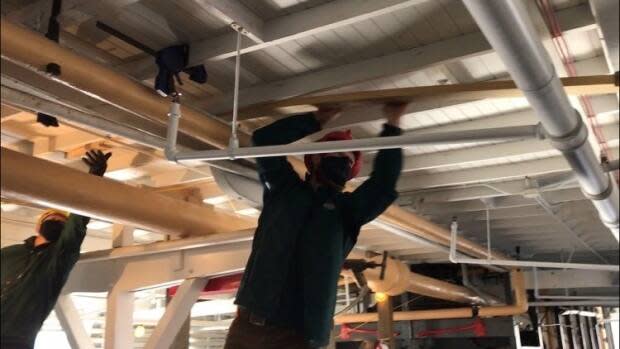Plan for S.S. Klondike in Whitehorse aims to preserve decaying historic vessel

It's an impossible-to-miss landmark in downtown Whitehorse, and it's been slowly falling into serious disrepair — and climate change threatens to make things worse.
Parks Canada is now floating an updated management plan for the S.S. Klondike National Historic Site, to both preserve the famous vessel and help it tell a richer story of the territory's history.
A new 10-year plan for the site is now up for public review. It details, among other things, plans to rehabilitate the decaying 84-year-old structure and also incorporate more research into Indigenous history.
"Definitely, that is one of our goals — inclusion of a more just history. We are working on it," said Stella Patera, manager of the site.
The S.S. Klondike, according to Parks Canada, "commemorates inland water transportation in the Yukon."

It was one of hundreds of sternwheelers that plied the Yukon River in the earlier 20th century. The steam-powered vessels provided a major link between communities, and to the world outside Yukon. They became largely obsolete with the construction of the highway between Whitehorse and Dawson City.
The original S.S.Klondike was built in 1929 and ran aground seven years later. A second one was built in 1937 and that's the one that now sits on the Whitehorse riverbank. It was opened to the public for tours in 1981 and is now one of Whitehorse's most popular tourist sites.
"It's an important part of Yukon history, connecting the Yukon to the rest of the world, but also, you know, changing the societies that were here in the Yukon prior to the arrival of the sternwheelers," Patera said.
"So having an impact, positive and negative, on the people of the Yukon."
According to the draft plan, the vessel is in poor condition and "in need of major structural and systems rehabilitation."
Decades of sitting on land and weathering the northern climate has taken a toll — but the extent of the decay is not fully understood. The plan calls for a comprehensive analysis to see what work needs to be done.
Climate change adds another challenge, the document says. Warming conditions and more precipitation over the years may further threaten the structure.

"Temperatures fluctuations, which range from -40 C to [plus] 30 C with months of freeze-thaw cycles, and increased humidity will pose challenges to the conservation of the asset. These challenges need to be considered in the analysis of rehabilitation solutions," the draft plan reads.
The goal is to have a long-term conservation plan in place by 2025.
The plan also calls for more Indigenous history to be represented and incorporated into the site by 2025. That would include more use of Indigenous languages in interpretive programs and products, it says.
The draft plan can be found on Parks Canada's website, and is open for public comment until Aug. 24.

